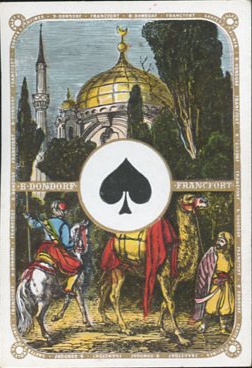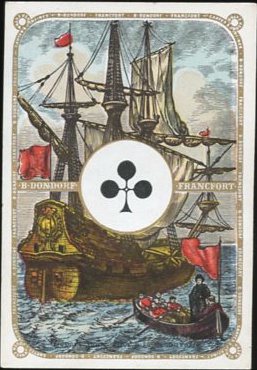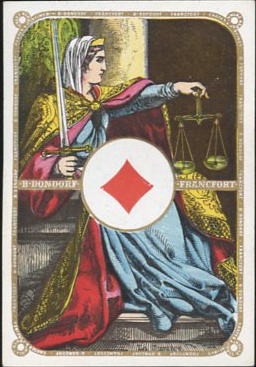April
2020
|
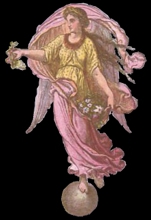 |
|
In
our hemisphere spring has finally begun and the Netherlands are in an
"intelligent" lockdown. But we're not smarter than the rest of
the world. Our government is apparently not intelligent enough to get a
sufficient supply of face masks. So all the main attractions to enjoy
springtime are still closed. I miss enjoying the sun, while zipping wine
on a terrace with friends. Others will miss the start of the festival
season. And the tulips and flowers in the Keukenhof will never be
seen live this spring.
However, there's no stopping Flora from doing her job...... |
I
received this deck halfway April, but I knew that it would almost certainly
become the deck to fill this spot. And I was right. Although I bought a few
other decks, none of them came even close. Nor in quality, nor in design. The
deck had been on our wish list for a considerable time, but it has not been on
offer very often and when it was, then usually at a price that was too high for
us. But I was lucky this time on the French eBay and won the deck at a price
that was only € 1.58 under my max bid. A small miracle!
The
deck was printed by Bernard Dondorf from Frankfurt, Germany, and is known under
several names. It has been called "Spiel der 4 Kontinente" or "Cartes
Illustrées", but it's usually referred to as the "Hausmann
deck". Probably because this is one of the rare occasions that the artist
behind the designs is known: Friedrich Karl Hausmann (1825 - 1886). Usually
these artists remain unknown, however impressive their artwork on the cards may
be. And then I don't even mention the nameless engravers who had to copy these
designs on the stones. They were true craftsmen too.
It is known that Hausmann and Dondorf were befriended and that Dondorf had
persuaded Hausmann to design banknotes and playing cards for him during the
years that Hausmann had returned to Frankfurt, 1855 to 1864. The first edition
of this deck is dated as 1858, but that's not carved in stone. It's well
possible that it took Hausmann a good deal of time to create the 52 designs for
this deck. The pip cards are done in b/w, but are pieces of art by themselves.
Be sure to click the aces!
This
deck here is from the first edition of the second variation, which is dated 1870 -
1875. In this edition the persons and scenes are named on the cards. The
captions are in French and I've given them here below for the courts. In the second edition of this variation these names are
no longer on the cards, but are mentioned in a separate leaflet that was added. That
was probably done as a practical solution for the problem that -depending on the
background- the captions are sometimes hard to read on the cards. Still,
leaflets get lost or separated from the deck and then you have no clue who or
what you're looking at. Well, the kings and queens are leaders and the jacks
soldiers or warriors from each region.
|
A third nickname in German is "4 Erdteile"
(4 parts of the earth) and that is probably the most correct name. Each
suit presents a different part of the world. In the German leaflet the
spades are described as "Afrika". However, courts and pips
would represent the Middle East better. But maybe the maker had the
Ottoman empire in mind, with its Islamic influence in Northern Africa in mind. Anyway, the rest of Africa is
not represented in this suit.
The Janissaires (Janissaries in English) were an elite unit in the
infantry of the Ottoman empire. |
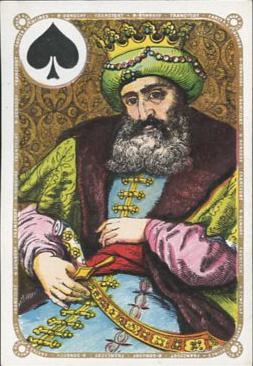 |
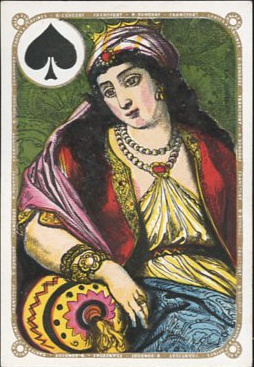
|
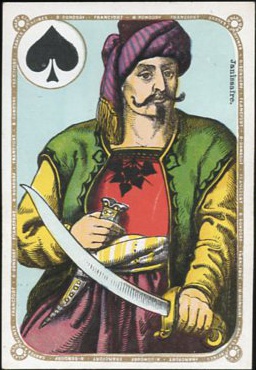
|
|
Sultan |
La Sultane |
Janissaire |
| For the hearts suit the leaflet speaks of "Asien"
(Asia), but the courts and pips only represent India. Other Asian
countries like Japan, China and others are not represented in any scene
on the pips. |
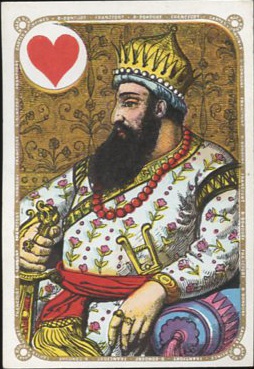 |
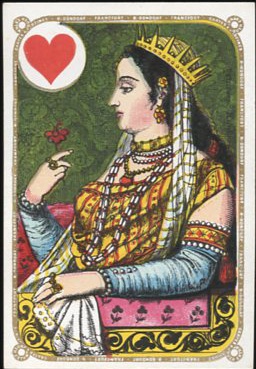
|
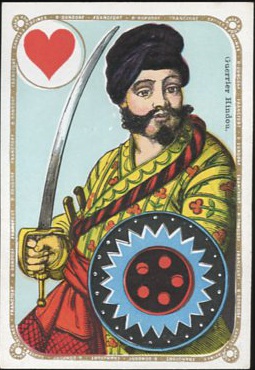
|
|
Le Grand Mogol |
La Princesse Indienne |
Guerrier Hindou |
| The German description of the clubs suit is "Amerika",
but in fact it's limited to South America and placed in the context of
the discovery of that part of the world by Columbus for the King and
Queen of Spain here below. |
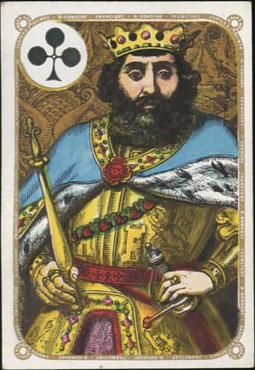 |
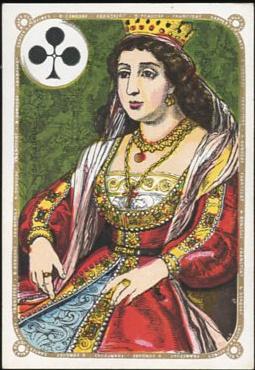
|
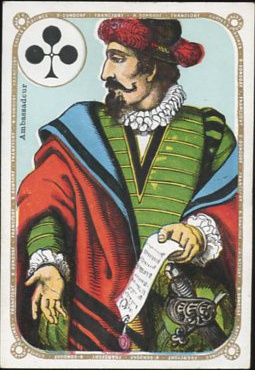
|
|
roi
Ferdinand |
la reine Isabella |
Ambassadeur |
|
"Europa" is the name given in the
leaflet for the diamonds suit. The depicted emperor doesn't look like
he's from the 19th century, but rather from mediaeval times. The empire
could be the Holy Roman Empire and that did have a single headed eagle
as coat of arms, roughly between 1150 and 1350. There's just one
problem: that eagle faced the opposite side. |
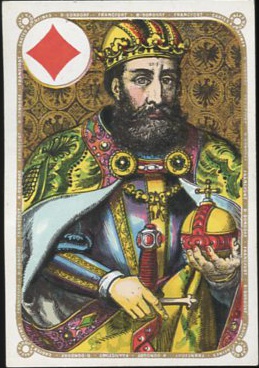 |
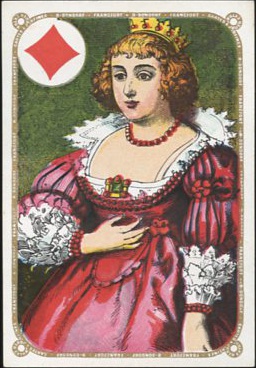
|
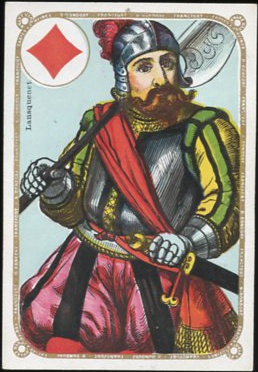
|
|
l'empereur |
l'imperatrice |
Lansquenet |
|
Name of maker and place in French. |
|
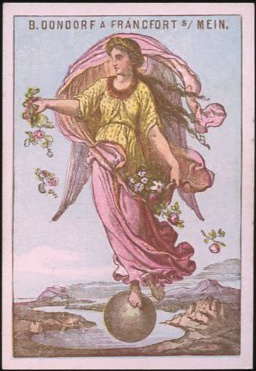
|
|
Back design with
-here she is again-
FLORA |
BACK
TO PRESENT MONTH







